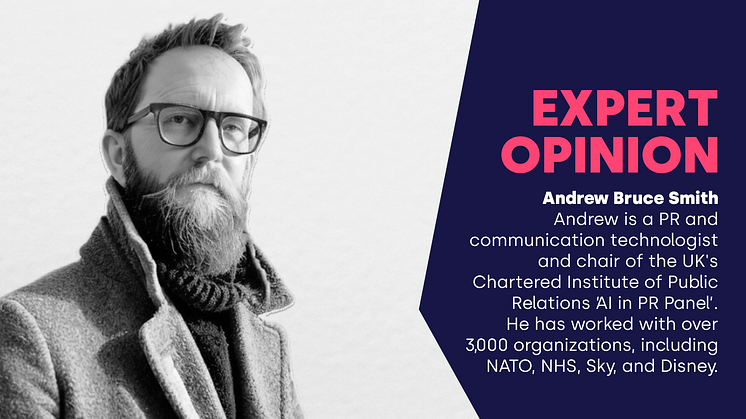
Blog post -
From Anxiety to Advantage: Leveraging AI in Communication
As someone deeply entrenched in the PR and communication industry, I've observed the rapid development of AI, especially generative AI, with a mix of excitement and concern. My experience training and consulting for over 3,000 organizations, including UEFA and International Rescue Committee, has shown me that AI is not a threat but a powerful tool that can significantly enhance our work.
Reflect on your goals and identify how AI can help take you there. The pressures we face—post-pandemic recession, tightened budgets, hesitant clients, and increasingly skeptical audiences—are compounded by the advent of generative AI. It's no wonder many feel overwhelmed. However, resisting AI is not a viable option. Generative AI is here to stay. Employers will demand that their workforce use it, and you can't possibly compete with someone using AI smartly and intelligently to support their work. If you want to stay in the business, you must eventually accept and adjust to it.
The widespread anxiety about AI stems from a misunderstanding of its capabilities and role. AI, in its current state, does not encroach upon our core professional values. Instead, it should be seen as an augmentative tool. The things that AI can do—at least for now—are not in areas where most professionals in the PR and communication industry have their professional value or pride. Rather, it's a tool that you can use to support and enhance your qualities and capabilities.
AI lacks the experiential and intuitive qualities we bring to our work. AI has no experience, or no concept of the outside world, and it simply lacks the "Je ne sais quoi" that the human touch can add. This perspective invites us to see AI as an opportunity to amplify our strengths rather than a threat.
For those feeling the pressure, I recommend a reflective approach: Examine your workflow and ask yourself: What are my professional core and qualities? What are my passions? What do I want to focus more on? In what direction do I want to take my career—and how can AI help me get there?
To lead the AI transformation in our organizations, I outline three key roles for us:
Staking out the organization’s AI strategy: We should lead in defining how our organizations and brands will utilize generative AI. This includes crafting a coherent perspective and communication strategy that addresses how AI affects audiences and integrates it as another stakeholder.
Informing and engaging Colleagues: The cultural shift required for AI adoption is significant. We must play a pivotal role in educating and engaging our colleagues on the creative, effective, safe, and ethical use of AI. Communication is the linchpin of successful digital transformation.
Guiding clients: With many organizations feeling overwhelmed by AI, we must step into advisory roles. We should help clients understand the implications of AI for their target audiences and navigate these changes strategically.
In conclusion, the integration of AI into the PR and communication industry is inevitable. By embracing AI as a tool to enhance our inherent human qualities, we can elevate our roles and lead our organizations through this transformative era.
